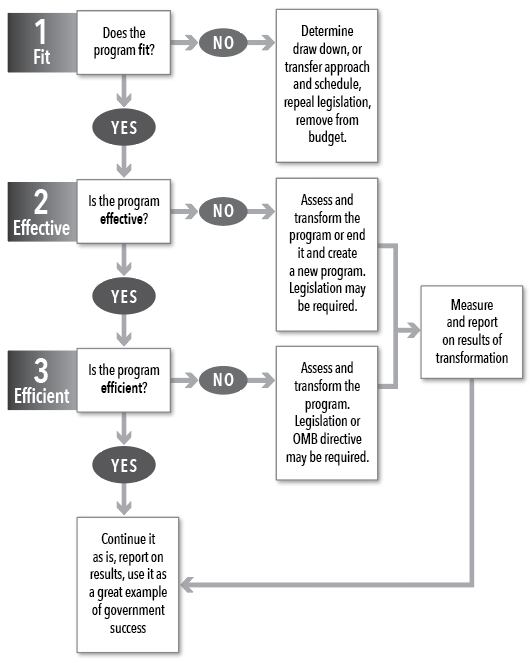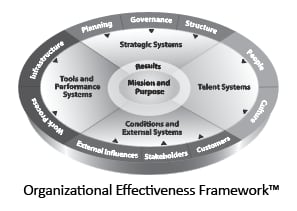Transformation is about an organization or program moving from one state of being to another. It implies a significant and disruptive change that is necessary when an organization shifts its mission, realigns resources, or changes the way work is done.
We don’t all quite know yet what is in all the agency transformation plans mandated by OMB Memorandum 17-22. There may be some bold ideas and some also-ran ideas that perhaps have great optics, but may show little true results. So far, I have heard hints of transitioning some programs to other agencies, reducing some identified duplication, shared service implementations, and a few program reductions. Some agencies have begun offering early-outs, others allowing attrition to address workforce reductions, and still other agencies indicating there will be no workforce changes.
I am a strong proponent of M-17-22 and its intent, yet I fear that it may go the way of many other transformational initiatives such as the National Performance Review, Grace Commission, or even Presidents Management Agendas – Administrations lose interest, turnover to a new ideology, or results are not fully achieved because the government lacks the time or expertise to do it right.
I hope this is not the case. Significant leadership, resources, and investment is required to complete a true reform. I am not expecting perfection, but what I would like to see is true commitment, an effective approach, and systemic change that sticks. Organizations and their mission driven activity should take a practical, not political view and achieve meaningful outcomes in efficiency, effectiveness, and accountability.
Within each agency reform must really begin with a program inventory.
A program inventory should include all programs and at a minimum contain: its name, purpose, identify who it serves, date of enactment, outputs, outcomes, costs, activity or unit based costs, resources expended (people, contractors, technology, facilities, etc.), and any identified future investment plans.
With this done we can walk through a process that is at first high level, and then become more granular to truly reform all aspects of how government operates. While some reforms can happen quickly overall reform will take time and extend beyond any current Administration.
As depicted in the graphic, reform involves Fit, Effectiveness, and Efficiency. Fit is the first area to address and involves the efficacy of the program itself, addressing its necessity. To address program fit, an agency should answer the following questions:
- Is this program an appropriate function of government?
- Does the program benefit the American people?
- Should the program be implemented by others—State, Local, community, family, individual?
- Should the program be implemented by the private sector or through a public/private partnership?
- Can the government afford the program?
- Is the program no longer applicable to contemporary society (e.g., a tax incentive program that no longer provides an incentive given current economic, market, or competitive conditions)?
- Is the program duplicative or overlapping with other programs?

If a program is assessed as “fit” you can then address efficiency and effectiveness. If a program is “unfit” then steps must be taken to eliminate it, reduce it, or change it in some way. In the case of duplication and overlap, additional analysis may be necessary to determine which program should best house or manage the function. A draw or ramp down action may be needed, legislation repealed or revised, and the program removed from the budget as well as any OMB or GAO program inventory.
Assessing effectiveness and efficiency is best done using a model such as the OE Framework depicted here. It is essential to not only determine efficiency and effectiveness but to also understand its root cause, whether it is or is not hitting the mark. Since there are many contributing factors to organizational effectiveness, a holistic and rigorous approach is necessary to ensure completeness and validity of the assessment.
For some programs it may require minor tweaks, for others it could mean new legislation or policy to make dramatic changes. For some its full effectiveness is not always known, because some agencies don’t measure it, and measures and data sources need to be established. For others, it may be much more obvious and easy to determine.

Determining efficiency and effectiveness follows a prescribed methodology that is adapted to the unique requirements of each program. It is critical that it be data driven — capture as many multiple points of evidentiary data as possible to provide or support the findings.
The important point is, make sure you don’t just accept anecdotal information, that you use a valid methodology, obtain multiple data points, and be objective in your assessment — going native doesn’t benefit anyone! Therefore, it is sometimes helpful to use outside expert advisors to conduct the assessment to ensure a lack of bias. It requires experts in organizational effectiveness — those that can act like a detective — look in the right places, overturn every stone, capture multiple points of evidentiary data, maintain objectivity, and link it to standards of effective organizational performance.
Underlying reform is a strong foundation of cross-government reforms in shared services, civil service, finance and budgeting, improper-payments, procurement, and IT. We can’t forget these as they are critical to true efficiency and effectiveness and will have significant positive impact across the government as a whole. For example, imagine budget management where managers can reduce the color of money for more flexibility, carry over funds from year to year, and having a 2-year budget cycle. Or a shared service system that provides central, consistent, and cost-effective services to all of government.
Also underlying reform is a strong focus on cultural change surrounding accountability and performance, ensuring we have strong capacity to perform and the American people experience the efficiency, effectiveness, and accountability.
The bottom line is, don’t underestimate the effort required to reform government programs (and keep the trains running while you do). While it can be a heavy lift, the result will be significant for the government and the American people.
Steve Goodrich is the CEO of the Center for Organizational Excellence, Inc. and author of Transforming Government from Congress to the Cubicle. sgoodrich@center4oe.com





